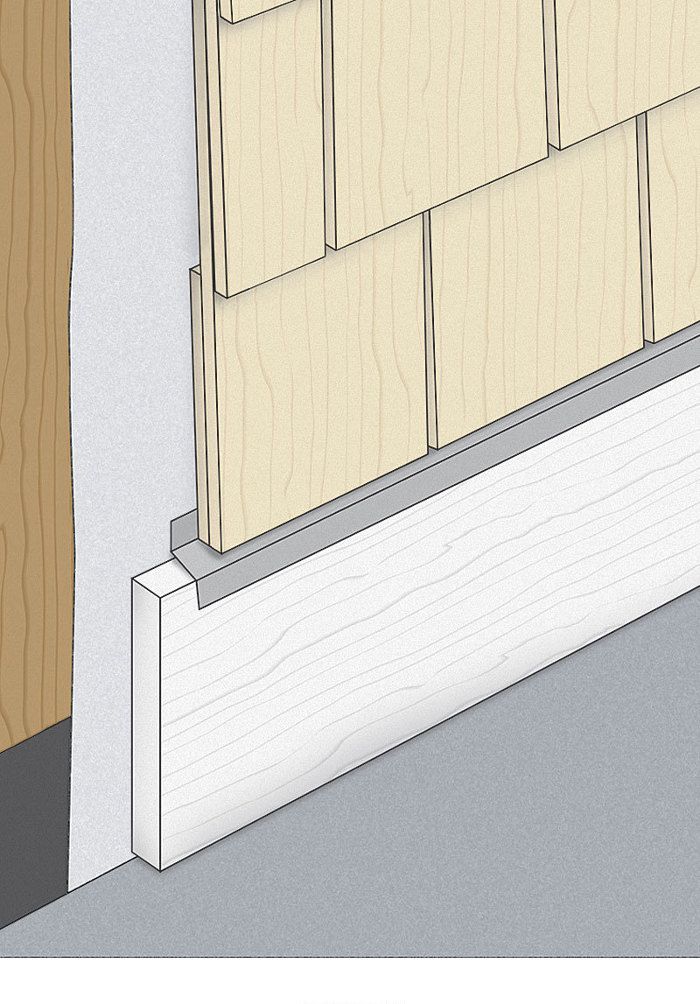
Q:
My six-year-old house is clad with James Hardie’s HardieShingle fiber cement shingles. The bottom course around my entryway is deteriorating. I thought I damaged the shingles when shoveling snow, but on closer inspection, they seem to be crumbling into chunks and powder. The bottom 2 in. to 3 in. on most of the shingles is suffering this problem, with some shingles crumbling as high as 5 in. to 6 in. First, what’s causing this problem? Second, will the rest of the shingles on the house deteriorate over time? Third, can the shingles that are damaged be repaired?
Rob Kidder, via email, None
A:
Editorial Adviser Mike Guertin replies: As indicated in the instructions, HardieShingles must be kept at least 2 in. above horizontal surfaces such as decks, patios, and roofs. Many of today’s manufactured siding, trim, decking, and roofing materials must be installed with spacing to permit expansion and to reduce the chance of wicking water.
Even though the HardieShingles on your house were factory finished, moisture probably wicked into the material on warm days during the winter. Then when temperatures dropped, the water inside the shingles froze, expanded, and crumbled the material. In addition to the freeze-thaw-freeze problem, any salt (calcium chloride or sodium chloride) that you may have used to break up the ice at the entry way likely attacked the shingles and accelerated the damage.
The rest of the shingles should be fine. Thoroughly check for spots where paint has chipped off the shingles, and spot-prime and paint them. If there are places where the shingles are covered or just too close to the grade, dig them out so that there is at least 6 in. of clearance.
I recommend cutting the damaged shingles about 7 in. up from the landing surface and stair steps. The remaining shingles can be pried slightly off the wall and cap flashing slipped behind them. Then a cellular-PVC or other water-impervious trim such as Boral TruExterior that the manufacturer permits to be in direct or close contact with horizontal surfaces can be installed. James Hardie recommends that the cap flashing be left at least 1?4 in. below the bottom of the shingles and that the cut ends of the siding be primed with a high-quality latex primer such as Kilz 2 Latex and painted with a latex topcoat. I also recommend that the cap flashing be bent at a 15° slope so water doesn’t sit on top of the cap.
From Fine Homebuilding #257, pp. 82, January 6, 2016
Fine Homebuilding Recommended Products
Fine Homebuilding receives a commission for items purchased through links on this site, including Amazon Associates and other affiliate advertising programs.

8067 All-Weather Flashing Tape

Affordable IR Camera

Reliable Crimp Connectors























View Comments
How about adding a bead of good caulk (like OSI) at the bottom course at that flashing, still maintaining the 1/4" spacing. I used OSI to seal the bottom of my LP siding on my shed. Have plenty of ground clearance but still concern with wicking.
jiffyjeffs, I think you might be creating more problems caulking that last course. The reason being that you'd create a dam to catch and hold water there, while without the caulk the water that will inevitably get behind the shingles will just drain right out over the flashing.
Somewhat related problem: house in Michigan built in 2008 and sided with James Hardie lap siding. On north side of house at an outside corner I have mushrooms growing out of the sides of the hardie vertical trim strips and from under a couple horizontal lap boards.
The trim was removed a couple years ago for same issue, bleached and replaced but the shrooms returned. How do I know if the moisture is coming from inside or outside the house? Any suggestions for remedies? Thanks.
How about a couple of graphics showing what it should look like across the bottom, across the top of a window, etc etc? Why play the guessing game. Just show is in a few graphics. Good Grief.